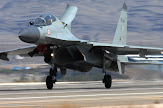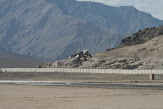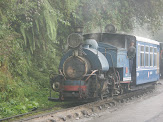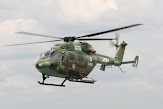The article has been reproduced as printed in "The Hindu" dated 17th June 2004, as one of few example of India's victories against Pakistan Sponsored terrorism in Kashmir.
A secret hunt that trapped top Jaish militants
By Praveen Swami
NEW DELHI, JUNE 16. If it had not been for a chance traffic accident, an alert Border Security Force signals intelligence monitor, and a superbly-crafted intelligence operation, Srinagar could have been the midst of a bloody suicide-bombing offensive this summer.
Three months ago, the Indian Army announced that it had eliminated the overall head of the feared Jaish-e-Mohammad's military operations, Qari Mohammad Asif. Operating under the code-name `Sehrai Baba', Asif had been responsible for a string of terrorist attacks since he took office in September 2003. Now, an investigation by The Hindu has found Asif was killed more than three months before his elimination was made public — leading to a top-secret covert operation that secured the liquidation of almost the entire top leadership of the Jaish-e-Mohammad.
On April 8, the Indian Army announced that it had killed Asif, along with four other senior Jaish-e-Mohammad commanders, in northern Kashmir. Those killed included Malik Salimullah, a resident of Gujaranwala in the Pakistani province of Punjab, Nazaqat Zaman, a resident of Haripur in the North West Frontier Province, Yahya Khan of Karachi, and Zubair Ahmad. In one single blow, the terrorist group had lost almost its entire field command: an event unprecedented in the history of counter-terrorist warfare in Jammu and Kashmir.
In fact, The Hindu 's investigation has found, Asif died a full five months before this encounter in a chance shoot-out in Srinagar's Bemina area. The shootout followed a minor traffic altercation involving Asif, after which he opened fire on BSF personnel who intervened. BSF intelligence personnel learnt that the killed terrorist was referred to within his organisation by the wireless code-sign `Tango-4'. The organisation's sources were also able to determine that `Tango-4' was a senior figure in the Jaish-e-Mohammad hierarchy.
BSF signals personnel then made a chance discovery: `Sehrai Baba' had disappeared off the airwaves after the death of `Tango-4'. This led to the suspicion that `Tango-4' and `Sehrai Baba' were the same person. No one in the Jaish-e-Mohammad's Srinagar apparatus, investigators discovered, had seen or heard from their supreme commander in weeks: all they knew was that he was on a secret mission and would establish contact only when absolutely necessary.
Since the Jaish-e-Mohammad did not know that `Sehrai Baba' had been killed, Indian officials believed the situation could be leveraged to their advantage. By mid-January, a detailed plan was in place, known only to the BSF's in-house intelligence organisation, the G-Branch, the Intelligence Bureau, top police officials, and the commander of the Srinagar-based 15 Corps, Lieutenant-General Nirbhay Sharma. An Indian intelligence asset planted deep within the Jaish-e-Mohammad was now put to work executing the covert operation.
In late January, the source made contact with the Jaish-e-Mohammad's Pakistan-based chief, Maulana Masood Azhar — the terrorist released in the Indian Airlines flight IC184 hostages-for-prisoners swap at Kandahar. The source claimed to be passing on messages from `Sehrai Baba' to Azhar. `Sehrai Baba,' he said, had planned a series of large-scale operations inside Srinagar, but needed logistical support and personnel. Since Indian intelligence had in the past demonstrated the ability to break terrorist communications codes, the Jaish-e-Mohammad would have to take the risk of arranging a physical meeting on the Indian side of the LoC.
It worked. When the Jaish-e-Mohammad group reached their liaison point near Sogam, having used multiple routes across the Lolab mountains, Indian troops were waiting. "The whole thing had to be arranged with care," says a senior military source. "We had to make sure that, first, the source could be moved around by the Intelligence Bureau without hindrance by our own troops, while at once maintaining secrecy. We had to make sure the LoC crossing was trouble-free, but also monitor it at each stage. Finally, the ambush had to be laid with great precision. The slightest error could have jeopardised months of hard work."
Soon after the Sogam incident, Indian forces moved rapidly to eliminate the last two Jaish-e-Mohammad personnel drawn on to the Indian side of the LoC by the source, Multan resident Tassaduq Irshad, and Mohammad Iqbal Baksh. While the Jaish-e-Mohammad continues to have a formidable ground presence in Jammu and Kashmir, it is an Army without Generals.
Tuesday, March 24, 2009
A Classic Indian Intelligence Operation
Posted by Anant Dhamala at 4:30 AM
Subscribe to:
Post Comments (Atom)










0 Comments:
Post a Comment